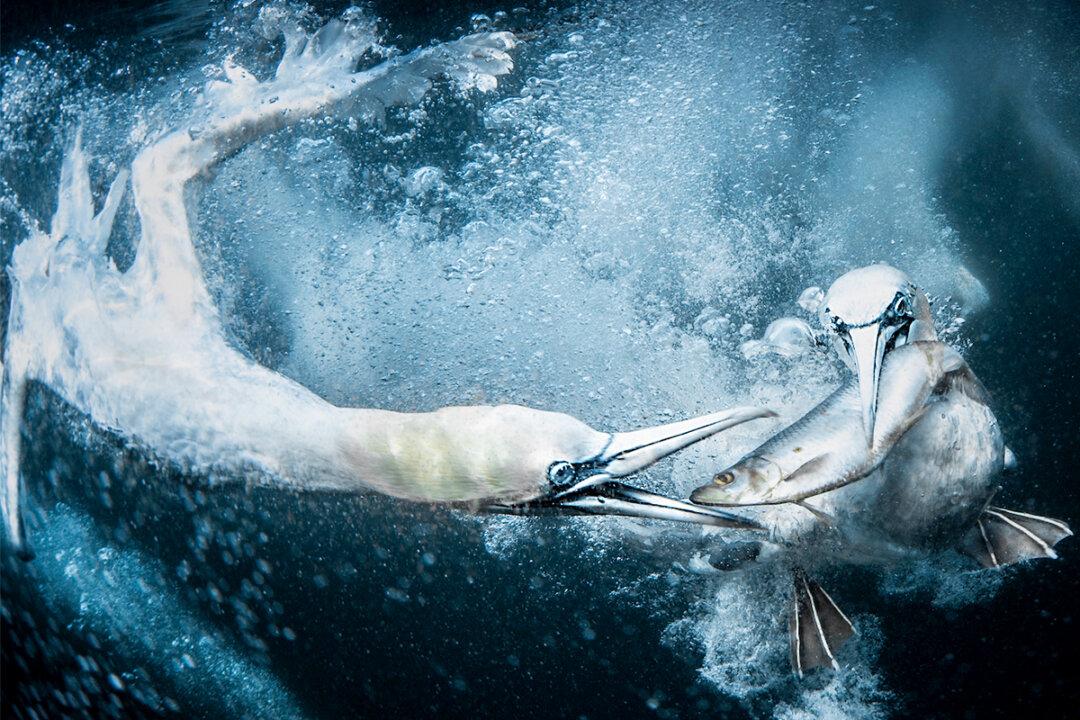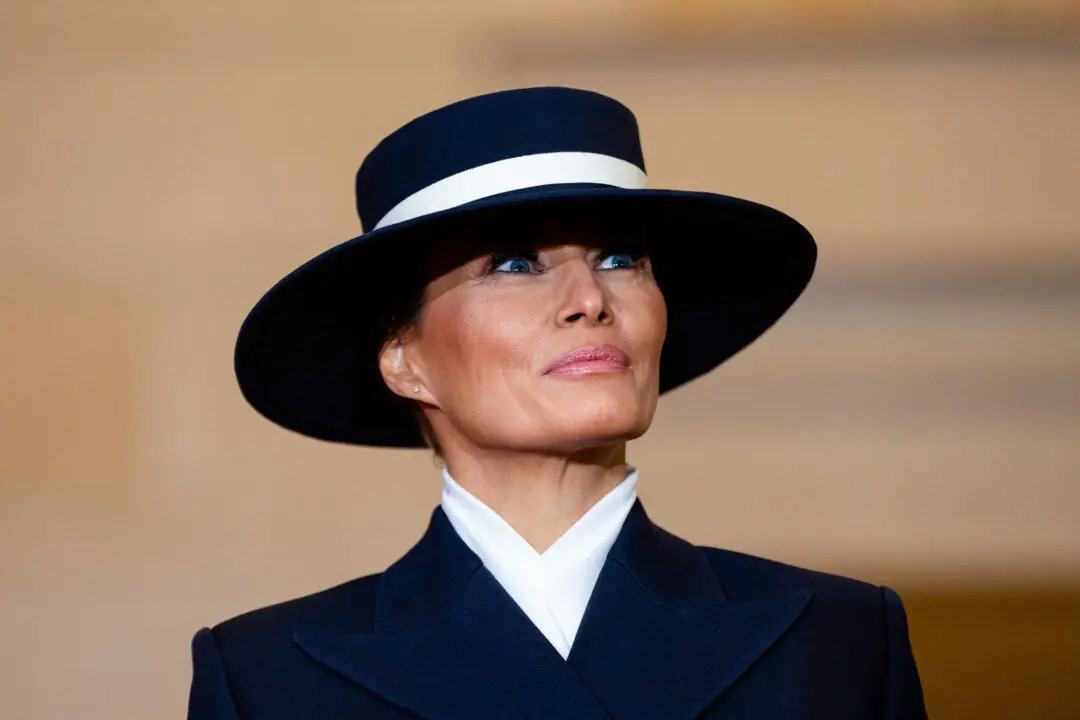Hunting orcas, angry fish, a lizard basking on the head of an iguana, and more. Behold the incredible winning images of the World Nature Photography Awards 2024 (WNPA).

From a pool of thousands of submitted entries, Tracey Lund from the UK grabbed the title of World Nature Photographer of the Year for her image “Underwater gannets” and a cash prize of $1,000.
Sharing insight into her winning shot, she said that while on a boat in the Shetland Islands, she saw thousands of gannets (large white seabirds) in the sky above. When they began divebombing into the sea to spear the fish, Ms. Lund lowered a hired DSLR camera in a waterproof housing attached to a pole-camera system and began clicking pictures.
“An unbelievable spectacle to witness, let alone photograph,“ she said. ”I took 1,800 images on that day but only had two that I could use.”

Nicolas Remy won gold in the Animal Portraits category for his moody shot of a black anglerfish. The image perfectly captures what the Australian diver set out to achieve.
“I was aware of this black anglerfish living in a reef that I regularly dive and had in mind a portrait that would emphasize the character of this ambushed predator,” he said.

Meanwhile, Alex Brackx from Belgium spent the morning hours following four cheetahs on the hunt. He described knowing something big was going to happen before taking his iconic winning photo. After passing herds of topis, gazelles, and zebras, they saw the chase was suddenly on.
“When, five hours later, our Maasai guide whispered, ‘They are going for the zebras,’ I was convinced they would attack the topis or gazelles dotted across the valley,” Mr. Brackx said.
Seconds later, the cheetahs burst into a small group of zebras.
“One cheetah ran towards us, clinging onto a foal. In those seconds, I took this picture of the mother zebra launching a last attempt to push her foal away from the attacking cheetah. She failed. I will remember those last seconds for the rest of my life.”
The image, which was later titled “Those last seconds” was awarded gold in the category Behavior–Mammals.

A curious spectacle of a lizard resting on the head of an iguana was captured by British retired environmental scientist John Seager, earning him gold in the category Behavior–Amphibians and Reptiles.
Sharing the inspiration behind this incredible shot, Mr. Seager said: “I took this image during a trip to the Galápagos Islands. ... [They are] full of iconic marine iguanas and lava lizards. This was the only time I saw a lizard basking on the head of an iguana, both obviously enjoying the occasion with beatific smiles!”

Also in the Galápagos, on Santiago Island, American Bill Klipp won gold for the category Behavior—Invertebrates for his technically brilliant shot of Sally Lightfoot crabs returning to the lava-rock shoreline.
“I knew that when a wave came in, the crabs would lock down, holding on tight so they did not get washed away, so I set up my tripod and pre-focused on the rocks, setting a very slow shutter speed to blur the moving water while keeping the stationary crab sharp,” Mr. Klipp said.
Meanwhile, far away in Koggala, Sri Lanka, traditional stilt fishermen caught the eye of Ioannis Pavlos Evangelidis, from Greece. His resulting misty sunset shot, showing the stillness of the fishermen contrasted with the moving tide, won Mr. Evangelidis the top prize in the People and Nature category.

Iceland’s magical, mystical landscape came into play in the Nature Art category. Israeli Miki Spitzer used a masterful touch to portray a combination of glacial river braids, ice-blue water, and golden sediment.
Calling the image “a delightful mirage for the human eye,” judges deemed Mr. Spitzer’s image worthy of a gold award.

“Is it a beautiful elephant with a flowing lion’s mane? Or a lion’s head with luxurious flowing braids? It’s up to you and your imagination,” the WNPA committee wrote.
Chatree Lertsintanakorn from Thailand ventured far afield to uncover the weird and wonderful. In the Plants and Fungi category, Mr. Lertsintanakorn scooped gold for his portrait of “a kind of living organism with a strange shape that looked like an owl” that was captured on a mountain wildlife sanctuary in Tak province, in his native Thailand.

The standard of underwater photography continues to go from strength to strength, exemplified by Andy Schmid from Switzerland with his image “Crowd Control.”
To achieve his vivid photo of an orca feasting on herring, Mr. Schmid used his free diving skills to shoot the spectacle from below.
“I managed to create a series of photos I had never dreamt of capturing,” he said.
For his efforts and outstanding expertise, judges bestowed Mr. Schmid with a gold title in the Underwater category.

In the Planet Earth’s Landscapes and Environments category, the sheer beauty of Iceland’s topography was highlighted. Ivan Pedretti, with his shot of a black sand beach contrasted against snowy Vestrahorn mountain, won gold.

American Richard Li’s heartbreakingly beautiful portrait of a leopard was amongst the wonderful winning entries in the Black and White category.
“In a hidden shelter in Kenya, I patiently waited until late into the night to capture the graceful moment when a leopard approached the pond, elegantly turning around,” Mr. Li, the gold award winner, said.

Aptly named “Living on the Edge,” Amit Eshel’s photo of two Nubian ibex battling on the edge of a cliff against the backdrop of Israel’s Zin Desert, won gold in the Animals in Their Habitat category. The picture was something Mr. Eshel had dreamed of capturing for many years, ever since he’d started following the herd in their dramatic natural environment.
“I always wanted to capture two adult males fighting in that exact spot, … but I never had a chance to do it until that special morning when I spotted these adult males just after sunrise on the cliff above me as they just started battling,” he said.

Wanting to include the Zin Valley and mountains in the image, the Israeli photographer knew he’d have to hike up and position himself above them.
He said: “I made my way up the cliff in a careful detour, trying not to spook them, and slowly positioned myself closer and closer to them in order to achieve the composition and angle of sunlight I envisioned in my mind.”
During their vigorous fights, males stand on their hind legs to strike one another. The collisions of their horns make such a loud noise that it can be heard far and wide. Despite these violent fights, there is no damage to the skull though sometimes horns are broken.
Also from Israel, Roy Wiesner watched transfixed as a pair of birds worked hard to build their nest on a half-broken dragon mobile hanging in the porch of a residential home, “constantly moving in all directions by the wind.”
“I watched for hours as the male and female flew in turns to add a twig, feather, hair, and even clothes tags that they collected nearby to build this perfectly shaped nest that can hold several eggs,” he said.

The male and female flew back and forth for days, unfazed by the humans sitting nearby, until the female was finally content, and Mr. Wiesner snapped her posing at the entrance to her new abode.
“Even the dragon couldn’t but smile,” he quipped after winning gold for the Urban Wildlife category.
The winner of the Nature Photojournalism category was Celia Kujala from the United States, who traveled to the Coronado Islands, Baja California, Mexico, to create her winning shot. Featuring a sea lion pup, “The Dangerous Toy” highlights the impact of environmental waste.
“Play is very important in the development of California sea lion pups,” Ms. Kujala said, “and everything in their environment is a potential toy. It is not uncommon to observe them playing with rocks, seaweed, and starfish. Sadly, it is becoming much more common to see them playing with another type of toy: a dangerous toy.”








